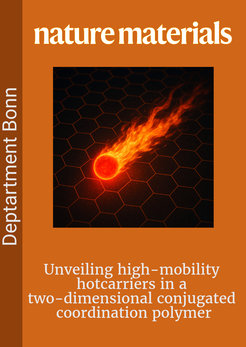Hot Electrons in 2D Polymers
Record-Breaking Charge Mobility Challenges Organic Material Limits
A groundbreaking study reveals highly mobile hot carriers in solution-processable 2D conjugated coordination polymers (2D c-CPs), challenging the paradigm that organic materials are unsuitable for non-equilibrium charge transport applications. Researchers from the Max Planck Institute for Polymer Research, the Technische Universität Dresden, and collaborating institutions demonstrated that Cu₃BHT films exhibit record-breaking hot carrier mobility (~2,000 cm² V⁻¹ s⁻¹) and quasi-equilibrium band-like transport (~400 cm² V⁻¹ s⁻¹), unlocking new possibilities for organic-based optoelectronics.

Using ultrafast spectroscopy and microscopy, the team tracked hot carriers traversing ~300 nm grain boundaries within picoseconds, far surpassing conventional organic materials. The material’s low thermal conductivity and unique phonon dynamics enable a hot-phonon bottleneck, prolonging carrier lifetimes to ~750 fs, comparable to state-of-the-art perovskites. This combination of electrical conductivity and thermal insulation mirrors the “electron-crystal phonon-glass” ideal for thermoelectrics and hot-carrier devices.
The work, published in Nature Materials, highlights Cu₃BHT’s potential in hot-electron transistors, photovoltaics, and photocatalysis. Its solution processability and structural tunability position 2D c-CPs as versatile platforms for next-generation organic electronics. Collaborative efforts included advanced characterization techniques such as time-resolved terahertz spectroscopy and atomic-resolution microscopy.
This discovery bridges a critical gap between inorganic and organic materials, offering a roadmap for engineering high-performance devices leveraging non-equilibrium physics.












